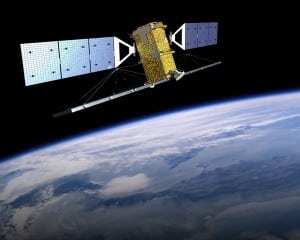Latest News
Pace to Acquire Aurora Networks for $310 Million
Pace plc, a global developer of technologies and products for PayTV and broadband service providers, has entered into a conditional agreement with Aurora Networks, to acquire Aurora for a headline consideration of $310 million in cash.
Aurora is a developer and manufacturer of advanced, next-generation optical transport and access network solutions for broadband networks that support the convergence of video, data and voice applications. For the year ended Mar 31, 2013, Aurora generated revenues of $217 million and EBITDA of $30 million.
“Acquiring Aurora will allow Pace to expand beyond our core business and build deeper and more embedded relationships with our customers, which the company believes will strengthen Pace’s position as a market leading solutions provider for the PayTV and broadband industries,” said Allan Leighton, Chairman of Pace.
Under the agreement, Pace will acquire Aurora on a cash-free and debt-free basis, plus a further $13 million payable on closing in connection with tax benefits to be recovered over the three years post acquisition.
Following completion of the acquisition, Aurora will continue to be run by its existing senior management team. Aurora will operate as a strategic business unit of Pace, leveraging its common services, whilst retaining the Aurora brand.
DLR, Thales Alenia Space and SES to Develop Space-Based Air Traffic Control Monitoring System
Thales Alenia Space Germany, DLR, and SES TechCom, a subsidiary of SES, have signed a long-term agreement for the joint development of the first European space-based Automatic Dependent Surveillance Broadcast (ADS-B) constellation to monitor and optimize air traffic control around the globe. The agreement follows the successful launch of the ADS-B payload developed by DLR, which is currently operated on board the Proba 5 satellite and continuously provides global ADS-B data to the mission processing and analysis center developed and operated by SES TechCom.
This payload, developed by DLR, will be followed by the in-orbit validation mission, which will demonstrate the full technical scope of space-based ADS-B. The European Space Agency has contracted Thales Germany for the development of this next generation ADS-B system, which is progressing on schedule with strong participation of the Luxembourg space industry.
Astrium Wins €230 M Contract for Next-Gen Weather Satellite Instruments
The French Space Agency (CNES) has awarded Astrium a €230 million ($318.20 million) contract to provide next-generation Infrared Atmospheric Sounding Interferometer (IASI-NG) instruments for Europe‘s Meteorological Satellite Agency (Eumetsat)’s future MetOp-SG satellites. The instruments will provide atmospheric temperature and humidity data with twice the accuracy of the previous generation.
The IASI-NG instruments will be part of the state-of-the-art instrumentation carried by the MetOp Second Generation (MetOp-SG) satellites, which constitute the space segment of the Eumetsat Polar System Second Generation (EPS-SG). The prototype satellites are developed by the European Space Agency (ESA) and will be operated by Eumetsat. The first generation Eumetsat Polar System, which includes two Astrium-built MetOp satellites that are now in orbit, contributes some 40 percent of the satellite data used in numerical weather prediction (NWP) models.
MDA to Provide RadarSat 2 Information and Services in Europe
MacDonald, Dettwiler and Associates, a global communications and information company, has signed two contracts totaling CA$7.5 million for the provision of RadarSat 2 information and services.
The Norwegian Space Center has extended the contract signed in January 2003 for MDA to provide RadarSat 2 information to the Norwegian government for a further three years for use in ice mapping, landslide monitoring, oil spill detection, and ship detection services.
The second contract is an amendment for MDA to extend its provision of RadarSat 2 imagery until November 2014 in support of Europe’s Copernicus program (previously known as Global Monitoring for Environment and Security), under a contract previously announced in August 2011. The RadarSat 2 imagery will be used to provide mission critical information for sea ice monitoring of the Baltic Sea, Arctic Ocean, and Antarctic Ocean throughout the ice seasons, improving the safety of maritime navigation and supporting environmental monitoring as part of the Copernicus program.
Get the latest Via Satellite news!
Subscribe Now
